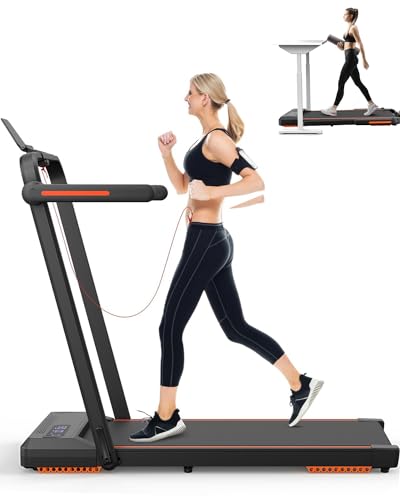Company Overview
-
Founded Date 20 de June de 1991
-
Categories Choperia
Company Description
A Guide To Gym Treadmill In 2024
Treadmills: A Comprehensive Guide to Understanding Their Functionality, Benefits, and Appropriate Selection
Introduction
Treadmills have ended up being a staple in modern-day physical fitness routines, both in homes and health clubs worldwide. They offer a convenient and effective way to preserve cardiovascular health, increase endurance, and help in weight management. This short article explores the various types of treadmills, their advantages, features to think about when purchasing, and some FAQs to guide users in making notified decisions.
Kinds of Treadmills
When it comes to selecting a treadmill, it is crucial to understand the various types available in the market. Here are the primary categories:
1. Manual Treadmills
- System: These treadmills have a basic design and rely on the user’s efforts to move the belt.
- Pros: More budget-friendly, quieter operation, no electricity required.
- Cons: Limited functions, might not provide the same variety of workout intensity.
2. Motorized Treadmills
- Mechanism: Powered by a motor that drives the belt, enabling users to walk or run at a set rate.
- Pros: Greater range of speeds and inclines, geared up with various functions such as heart rate screens and exercise programs.
- Cons: More costly and may need more maintenance.
3. Folding Treadmills
- Mechanism: Designed for those with restricted area, these treadmills can be folded for easy storage.
- Pros: Space-saving, frequently motorized, flexible functions.
- Cons: May be less resilient than non-folding designs.
4. Commercial Treadmills
- Mechanism: High-quality machines designed for use in health clubs and gym.
- Pros: Built to endure heavy usage, advanced functions, frequently consist of guarantees.
- Cons: Pricey and not ideal for home usage due to size.
5. Curved Treadmills
- System: A special style that permits users to propel the belt utilizing their own energy.
- Pros: Offers a more natural running experience, promotes better running form.
- Cons: More expensive and can be noisier.
| Treadmill Type | Pros | Cons |
|---|---|---|
| Manual | Economical, no electrical energy needed | Limited features |
| Motorized | Range of speeds, advanced functions | Upkeep needed |
| Folding | Space-saving, typically motorized | May do not have toughness |
| Business | Built to last, professional-grade features | Costly |
| Curved | Natural running experience, promotes excellent kind | Greater cost |
Advantages of Using Treadmills
Treadmills provide numerous advantages that can add to one’s overall fitness goals. A few of these benefits include:

- Convenient Workouts: Treadmills allow users to exercise indoors despite climate condition.
- Cardiovascular Health: Regular usage can enhance heart health by increasing endurance and promoting healthy flow.
- Weight Management: Effective for burning calories, which assists in weight reduction and management.
- Customizable Workouts: Users can manage speed, incline, and duration to develop personalized workout experiences.
- Safety: Treadmills supply a foreseeable surface, minimizing the threat of falls compared to outdoor running.
- Multifunctional: Many treadmills come with features like heart rate monitors, workout programs, and even entertainment systems.
Choosing the Right Treadmill
When choosing a treadmill, potential buyers must think about several key aspects:
Features to Consider:
- Motor Power: Typically measured in horse power (HP), a motor strength of at least 2.5 HP is suggested for serious runners.
- Belt Size: A longer and wider belt accommodates various stride lengths, offering convenience during workouts.
- Slope Settings: Adjustable slope features simulate outdoor hill running and can increase exercise intensity.
- Weight Capacity: Ensure the treadmill can support the user’s weight for security and durability.
- Console Features: Look for easy to use dashboards, workout programs, and Bluetooth compatibility for streaming music or other functions.
Spending plan Considerations
- Under ₤ 500: Entry-level manual treadmills suitable for casual walkers.
- ₤ 500 – ₤ 1,500: Mid-range motorized treadmills for the home that use more functions and much better toughness.
- ₤ 1,500 – ₤ 3,000: High-end designs with sophisticated innovation, larger motors, and longer service warranties.
- Over ₤ 3,000: Commercial-grade treadmills perfect for regular use in fitness centers or training centers.
Regularly Asked Questions (FAQs)
1. How frequently should I use a treadmill?
It is suggested to utilize a treadmill at least 3 to five times a week, integrating numerous intensity levels for best outcomes.
2. Can I drop weight by utilizing a treadmill?
Yes, consistent use of a treadmill can add to weight-loss, particularly when integrated with a well balanced diet plan and strength training.
3. What is the very best speed to walk on a treadmill for beginners?
A speed of 3 to 4 miles per hour is an ideal range for beginners. It’s necessary to start slow and slowly increase pace as comfort and endurance improve.
4. Do I require to utilize a treadmill if I currently run outdoors?
Utilizing a treadmill can provide additional benefits, such as regulated environments and differed exercises (slope, intervals) that are not constantly possible outdoors.
5. How do I keep my treadmill?
Regular maintenance includes lubing the belt, cleaning up the deck and console, and inspecting the motor for optimal efficiency.
Treadmills are essential tools for those looking to enhance their fitness levels in a controlled and convenient way. With numerous types readily available, comprehending their features and benefits is crucial for making an informed purchase. By considering personal workout needs, space accessibility, and spending plan restrictions, people can find the most appropriate treadmill that fits their way of life. Integrating treadmill workouts into a balanced physical fitness regimen can lead to better health outcomes and an enjoyable workout experience.


